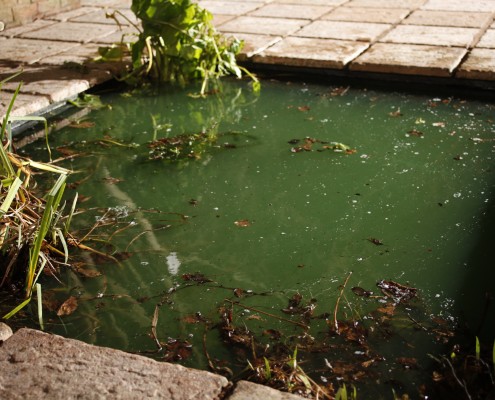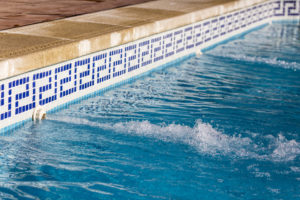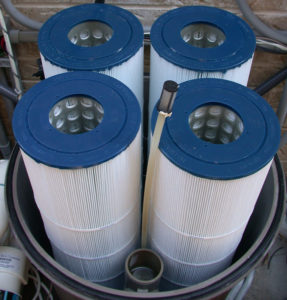Unless you are a pool technician or a backyard pool enthusiast with a lot of free time on your hands, chances are your pool is at times a source of frustration. In fact, I would wager that you are reading this because you are either (a) responsible for pool service and are having trouble with it, or (b) considering taking care of your pool but aren’t sure you are up to the task.
One of the main things I’ve found during my 40 plus years as a pool pro is that once I explain the basics of pool service, many pool owners go on to achieve the same results as a pool pro, with a minimal time investment and at a fraction of the cost.
So, let us begin. Imagine for a moment that every sparkling clean pool has a service crew aka “Poole’s Four”. (Hint: think Ocean’s Eleven)
Poole’s Four is responsible for protecting your pool against the evil forces of algae and other invaders. The first three members (we’ll save the best for last) of Poole’s Four are:
- Sanitation, aka “The Killer”
- Circulation, aka “The Driver”
- Filtration, aka “The Bag Man
Each member of Poole’s Four is important and they must work as a team to produce clear, clean water. If any one of Poole’s Four pulls a no-show or slacks, the result will inevitably and quite naturally end up looking something like this:

So...what exactly do Poole’s Four do?
Sanitation… The Killer

All swimming pools must use a sanitizer, such as chlorine, to help with water quality. Since chlorine is the most popular form of pool water sanitation, we will focus on it for the purpose of this article.
Chlorine’s job is kill living things in the water, such as algae and dangerous bacteria. It’s that simple (hence the name, the Killer).
Too little chlorine and the door is left open for an algae bloom and cloudy water to muscle in on your pool. Too much chlorine will ruin all the plastic in your pool overtime – things like the pool cleaner, the chlorine floater, and even your pool’s vinyl liner (if you have one). The right amount of chlorine produces just the right result.
But…what is the right amount? Well, the only way to know is to test your water. Personally, I’ve come to use test strips as a reliable indicator of sanitizer level. But, whatever you choose to use, you must test your water weekly, at a minimum, and make sure your chlorine level is at least 1 – 3 ppm (parts per million). I have used those levels for years with great results.
Other chemical levels, such as Ph and Alkalinity, are part of the pool service regimen. In fact, one could argue that these two factors make up a 5th member of Poole’s Four, but in the interest of simplicity I will cover these in a future article (Plus, this setup allows for a sequel!) For starters, a proper level of chlorine is the beginning to clear, clean water.
OK, so let’s assume the Killer’s job is done. What happens to all the dead algae and bacteria now floating in their watery grave? That’s where the Driver comes in…
Circulation… The Driver

While nearly everyone knows their pool has to have sanitizer, you might be surprised to learn how few know what all that expensive equipment does when it runs.
Quite simply, the main job of the Driver is to pick up the water, move it through the filtration system (the Bag Man) where it gets cleaned, and then return it into in your pool.
It does this through the power of suction. When your pump comes on, it sucks water through your skimmer(s) and drain(s), moves it through your filter, and pushes it back into the pool. Think of it as a giant dialysis machine.
In addition to getting your pool water to the Bag Man, the Driver completes an equally important task: movement of the water itself. When your pool water gets moved around, it makes it harder for algae to grow. This, combined with proper sanitation (which is also distributed by the Driver), is very effective against algae blooms taking over your pool.
Now, hopefully you understand a bit more about why Circulation is so important. If you do, you will also understand why it’s so important to make sure the Driver can do his job with as few roadblocks in its way, such as:
- A pump that isn’t operating at peak performance
- Not enough water in the pool
- Excessive amount of leaves and debris in the water leading to full skimmer and pump filter baskets
- A clogged pipe (over the years, I’ve seen a lot: pool toys, pine needles, and dead rodents, to name a few!)
- Air entering the pipes before it gets to your pump
Now for the third member of Poole’s Four: the Bag Man.
Filtration… The Bag Man

Out of the three elements, one could argue the Bag Man’s job is the simplest. He (or she) just sits there and collects dead algae, dirt, oils, leaves, grass, etc. as the Driver drops them off. You can make the Bag Man’s job even easier by removing as much debris as you can from skimmer and pump filter baskets during your weekly pool service routine.
Depending on the type of filter you have (cartridge, sand, or diatomaceous earth aka “DE”) will vary your service requirements. For cartridge filters, we recommend a thorough cleaning at least every 6 months. For sand or DE filters, the explanation of “backwashing” will be the subject of a future article. But for now, we recommend that you learn how to backwash your filter.
Now for the last, and possibly most important, member of Poole’s Four…
Poole (You!)… The Boss
Here’s the thing: unless someone supervises the Killer, the Driver, and the Bag Man, they will stray from their duties. That someone is the Boss. The Boss ensures that everyone works in harmony to get the job done efficiently and effectively.
Most anyone can be the Boss, provided they are willing to consistently perform the following pool service tasks:
- Brush and skim pool surface and bottom
- Test pool water
- Empty basket, pool cleaner bag, and strainers
- Add chemicals to the pool
- Have a basic familiarity with pool equipment
- Keep an eye on things and look for abnormalities
If you can do these things faithfully, you, my friend, can be the Boss of your pool. As the Boss, by spending an average of 15 – 30 minutes per week, you can keep the pool in better condition than a pro. In addition to saving money, many people who become the Boss report a high level of satisfaction in maintaining beautiful pool water.
Conclusion
Well, that’s my crash course on pool service for beginners. I hope you enjoyed reading this as much as I enjoyed writing it. Stay tuned for future articles!
Feel free to use any one of our free online pool tools to help make sense of it all.
